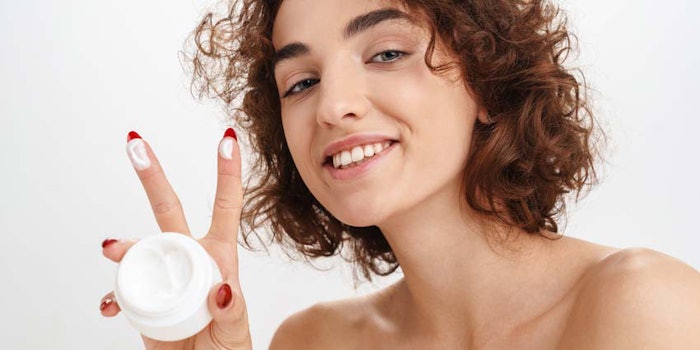
An industry expert once told me the best thing you can do for your skin, to keep it looking younger, is to moisturize it. Little did she know that moisturization would become a crucial step in a larger regimen to ensure our health, safety and survival.
With today's frequency of hand-washing and sanitizing, we're killing and removing topical threats but creating new ones if we don't repair the cracked and dry barrier that shields us in the first place. It's no wonder why, according to Valuates Reports, the global skin care market is expected to grow at a CAGR of 4.5% between 2016 and 2024 to reach US ~$195 billion. In relation, we offering the following brief literature review on ingredients and approaches being explored to achieve skin moisturization.
Bacteria-derived Arthrofactins to Moisturize Skin, Improve Elasticity and Boost Barrier
US Pat 20200022894A1; assigned to L'Oréal; Publication date: Jan. 23, 2020
Disclosed in this patent is the non-therapeutic cosmetic use of a mixture of arthrofactins as a moisturizer for dry skin. These inventors unexpectedly found that arthrofactin, a cyclic lipopeptide from the biosurfactants family described by Lange et al. (2012) and produced by Pseudomonas sp MIS 38, activates the synthesis of genes associated with moisturization, thus increasing moisturization in skin and improving stratum corneum elasticity and barrier function.
Kiwi Peel to Moisturize and Tone Skin
Koval', M.R.: National University of Pharmacy, Kharkiv, Ukraine; Thesis paper
In a recent thesis paper, kiwi peel is described as more useful than the fruit itself for overall human nutrition and health, and it can be consumed with the pulp. The peel is rich in the antioxidants vitamins C and E, which reportedly help to tone, moisturize and rejuvenate the skin by protecting it against free radicals. Furthermore, fruit acids are said to affect the skin on a molecular, cellular and tissue level, exfoliating and moisturizing while imparting anti-inflammatory effects, stimulating the synthesis of collagen and glycosaminoglycans, and helping to balance the pH of the skin.
Echinacea, Orchid and More: TCM Moisturizing Blend
Meng, H., Li, J.-R., ...Yi, F., et al.; Research Square; doi: 10.21203/rs.3.rs-20933/v1
According to these authors, traditional Chinese medicine (TCM) blends, crafted using TCM principles, are commonly used to moisturize skin. Here, a combination was created based on Echinacea purpurea to protect skin; Dendrobium nobile (orchid) to "clear heat and promote fluid production"; Sophora flavescens also to "clear heat" and for diminished inflammation; and Aloe vera with Lycium barbarum to "nourish yin." Together, the "poly TCM moisturizing formulation" was shown to impart skin moisturization without irritation.
Papaya Sucrose as a Skin Humectant
Ningsih, K.S.U., Darsono, F.L. and Wijaya, S.; Universitas Katolik Widya Mandala Surabaya, Surabaya, Indonesia; Journal of Pharmacy Science and Practice
These researchers explored how sucrose from papaya fruit functions as a moisturizer by imparting humectancy; i.e., reducing water evaporation from skin. Here, three formulas containing papaya fruit extract at different concentrations were assessed. Results showed that increasing the concentration of the extract significantly increased moisturization in skin.
Lake Clay vs. Skin Hydration, Elasticity and More
Misina, S.M., Tretjakova, R., Kodors, S. and Zavorins, A.; Cosmetics; https://doi.org/10.3390/cosmetics7030051
The use of clay, especially in biomedical applications, has been known since ancient times and is regaining interest with the natural, "clean" beauty and wellness movements. However, these authors report the effects of lake clay in skin have not been studied. As such, clay derived from Lake Zeiļu, in Latvia, was tested on skin properties such as hydration, elasticity, TEWL and pH. Results indicated in the short term (60 min), only statistically significant changes in pH were noted. In the long term (3 weeks), lake clay applications showed a statistically significant (p < 0.001) improvement in skin elasticity and hydration with no significant changes in skin pH. TEWL had a tendency to decrease but was not statistically significant. For further details, see the complete article.










